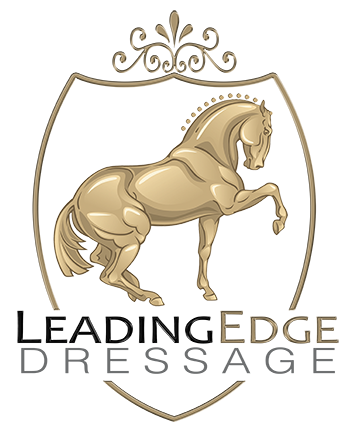Reposted from 06/2013
I can remember clearly the exact words that she spoke as she stood looking at me over the arena fence. “We would like you to teach her to canter.” It seemed like a simple enough request, and I assured her it would not be a problem. The big kind mare they brought was half Percheron and looked every bit of it. She was a kind stout mare, younger and green. They had asked for a month of training as they only had this one request. It is a good place to start.
Day one of training is always about introductions. I set about building a rapport with each horse by starting with ground manners, and simple things like grooming, saddling, will the horse walk with me, stop when I stop, or do I need to address inattentive behavior, such as being dragged around by her. This gives me insight to her willingness overall. I am able to get a sense of what type of person has been the partner to this sweet mare. It is a good indication of what I can expect once I am astride. Will they be with me, listening intently, or looking out the window at the scenery.
In your day to day non horsey life I am sure you all can relate, you are having a conversation with someone, and loose interest in their words, maybe have heard the story before, and your mind drifts elsewhere. You are aware that the other is talking, can hear the voice, but your mind does not absorb the content of their words. It seems a common thing in most horse/rider interactions. Somehow sitting aboard a 1200+ lb. horse that is daydreaming does not feel especially safe to me, let alone fun. Then there are those conversations that are interesting, exciting, and connected. Like a dance, weaving in and out, spinning around, changing directions, and bouncing between those engaged. Those are my favorite! Whether it is horse or human, to have that engagement, interest, and depth is so inspiring, it leaves those who are involved feeling energized after. The bread of life, and my source of happiness and peace.
The big mare was not the engaged attentive type. She gazed out the windows and put in only as much effort as she absolutely had to. Coasting along without much energy or thought, not unhappy, or pushy, just not there with me. My first thought was that maybe we needed to reassess the goals. There was little to no responses to my requests to direct or steer her. The shape of the arena was the direction of travel, and changing the path was much like asking a large barge with momentum to alter path. I couldn’t squelch the giggle that it evoked. Oh my, WHY would anyone want to go faster (canter) without any steering?
I contacted the owner, and told her I would like to work on a few other things before canter, but that I promise before the month was up, canter would not be a problem. They insisted that they did not need anything else, because they were able to ride her without any problems. It took a bit of convincing, but they agreed to give me a couple of weeks before coming out to see how her canter was doing.
I jumped right into asking for her attention on the ground, making a game out of it. Follow the leader, walking slow, fast, turning quickly, backing, and other body control exercises that keep her interested in what we are doing. The key is to keep it changing, not repetitive, but specific. Horses love this game. And it establishes the leader/follower hierarchy that is an important piece of horse psychology. This translates to the saddle in a wonderful way, if you can keep the leadership role sharp. Learning to move away from pressure will make turning much easier. That pressure can be as light as pushing the air between you, if you explain to them that is your expectation.
It was not long before we were soft and supple, bending and turning, and light off my leg. She loved the interaction, and connection, and was no longer watching the clock so she could be done. We even had enough responsiveness to the leg that she would canter after a couple of walk trot transitions. Her owners came out to check on her progress, and instead of showing them, I asked them to bring boots, so they could ride her. I coached them through a few simple exercises that used the newly acquired steering skills, then a few up down transitions, and after teaching them how to set her up for a successful transition, asked for a canter. It is a very rewarding place to stand, center of the ring, watching someone smile uncontrollably. I gave them the tools to find their horses mind, not just her body. In that moment, they understood. She finishes her ride, and jumps off, gives me a big hug, and says, I can’t believe how easy it can be to steer her!
Yes, much more important than going fast….
